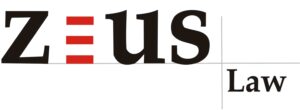Stamp duty implications on an order sanctioning a scheme of arrangement
By Mr. Sandeep Bhuraria, Senior Partner, and Parijat, Senior Associate, ZEUS Law Associates
The jurisprudence behind mergers and demergers in India is regulated by the mechanism envisaged under Chapter XV of the Companies Act, 2013 (“Act”). However, the controversy with respect to the levy of stamp duty on an Order duly sanctioning a Composite Scheme of Arrangement (“Scheme”) passed by the National Company Law Tribunal (“NCLT”) has been put to rest by the Hon’ble Delhi High Court.
AN OVERVIEW OF THE INDIAN STAMP ACT, 1899
- The Indian Stamp Act, of 1899 (“ISA”) is adopted as the central legislation to levy stamp duties across India and is enacted for the purpose of consolidating and amending the law relating to stamps.
- As per Section 3(1) of the ISA, the instruments mentioned in Schedule I are chargeable with the duty specified therein, subject to the provisions of ISA. Different states in India have either enacted their own stamp acts or have adopted the ISA, with certain amendments. However, the rate of levy varies for different states.
- INSTRUMENT:
- Section 2(14) of the ISA defines ‘Instrument’ which includes any document by which any right or liability is created, transferred, limited, extended, recorded, or extinguished.
- CONVEYANCE:
- Section 2(10) of the ISA defines ‘Conveyance’ to include every instrument, by which, the property is transferred inter-vivos and which has not been specifically provided under the Schedule to the ISA.
- Hence, Conveyance under the ISA is a catch-all residuary provision that prescribes that all such instruments which are not specified in the Schedule to the ISA shall fall within its ambit.
A SCHEME IS AN INSTRUMENT OF CONVEYANCE:
- Interpretation of the definition of ‘Instrument’ and ‘Conveyance’ under the ISA would showcase that the said definition is an inclusive one, which is amenable to liberal interpretation.
- The usage of the term ‘includes’ in a definition clause is done with the legislative intent to enlarge the interpretation. Thus, the definition of ‘Instrument’ and ‘Conveyance’ under the ISA can be comprehended to not only include the things that are expressly included but also such things as they signify according to their nature and import.
- A Scheme may include mergers and demergers involving the issuance of shares and also the transfer of immovable property by which the said property is vested in the transferee company.
- Section 232(4) of the Act prescribes that an Order of the NCLT approving a Scheme leads to the transfer of the assets and liabilities of an undertaking of the transferor companies to the transferee company.
CLARITY ON THE LEVY OF STAMP DUTY
- The Delhi High Court settled the Law in its landmark judgment of Delhi Towers Limited Vs. G.N.C.T. of Delhi wherein it was held that an Order sanctioning a Scheme is an instrument of conveyance and hence, exigible to stamp duty. The Delhi High Court observed that a legislative omission to mention a subject or item in an inclusive definition does not tantamount to the legislative exemption from the applicability of the statutory provisions.
PRESCRIBED RATE OF LEVY:
- Interestingly, the Delhi Towers judgment while stating that an Order sanctioning a Scheme is a conveyance did not deliberate on the rate of the levy of stamp duty on such an Order.
- The controversy involving the aforesaid has been put to rest by various states viz. Maharashtra, Uttar Pradesh, Karnataka, Gujarat, Kerala, Madhya Pradesh, etc., have adopted the provisions of the ISA and have made suitable amendments to include an Order passed by the NCLT sanctioning a Scheme and prescribing the rate of levy in respect thereof. Most the States Legislatures have prescribed a lower rate of stamp duty where only shares are being issued to the shareholders of the transferor companies. Generally, the rate of such levy ranges between 0.5% to 1% on the aggregate market value of the shares. In cases where immovable property is being transferred in a Scheme, the prescribed stamp duty is considerably higher and ranges between 2% to 5% on the market value of the immovable property.
- In states that have not amended the definition of conveyance or their respective Schedules, the rate of levy on an Order approving a Scheme is under the heading of ‘Conveyance’.
(This Article is solely for information purposes, does not constitute legal or professional advisory, and should not be relied upon or used as a substitute for legal advice from an attorney.)
About the Authors:
 Mr. Sandeep Bhuraria has been a practicing lawyer for about 30 years and is a Senior Partner at ZEUS Law Associates. He leads the Commercial Litigation and Restructuring division. He is well-versed in the intricacies of Indian Commercial, Civil, and Insolvency Laws. He regularly advises foreign investors as well as Indian entrepreneurs on their legal strategy with respect to restructuring their businesses in India. Parijat is a Senior Associate at ZEUS Law Associates and works in the Commercial Litigation and Restructuring vertical.
Mr. Sandeep Bhuraria has been a practicing lawyer for about 30 years and is a Senior Partner at ZEUS Law Associates. He leads the Commercial Litigation and Restructuring division. He is well-versed in the intricacies of Indian Commercial, Civil, and Insolvency Laws. He regularly advises foreign investors as well as Indian entrepreneurs on their legal strategy with respect to restructuring their businesses in India. Parijat is a Senior Associate at ZEUS Law Associates and works in the Commercial Litigation and Restructuring vertical.
 ZEUS Law Associates is an ISO certified full-service corporate commercial law firm with a team of dedicated and experienced lawyers well versed in handling domestic and cross-border transactions across sectors, jurisdictions, and regulatory landscapes. The firm’s practice areas include Corporate and Company Law, M&A and Joint Venture, Private Equity, FDI & FII, Real Estate and Infrastructure, Intellectual Property & Commercial Law, Litigation, Alternate Dispute Resolution, Indirect Tax, and NRI Services.
ZEUS Law Associates is an ISO certified full-service corporate commercial law firm with a team of dedicated and experienced lawyers well versed in handling domestic and cross-border transactions across sectors, jurisdictions, and regulatory landscapes. The firm’s practice areas include Corporate and Company Law, M&A and Joint Venture, Private Equity, FDI & FII, Real Estate and Infrastructure, Intellectual Property & Commercial Law, Litigation, Alternate Dispute Resolution, Indirect Tax, and NRI Services.



